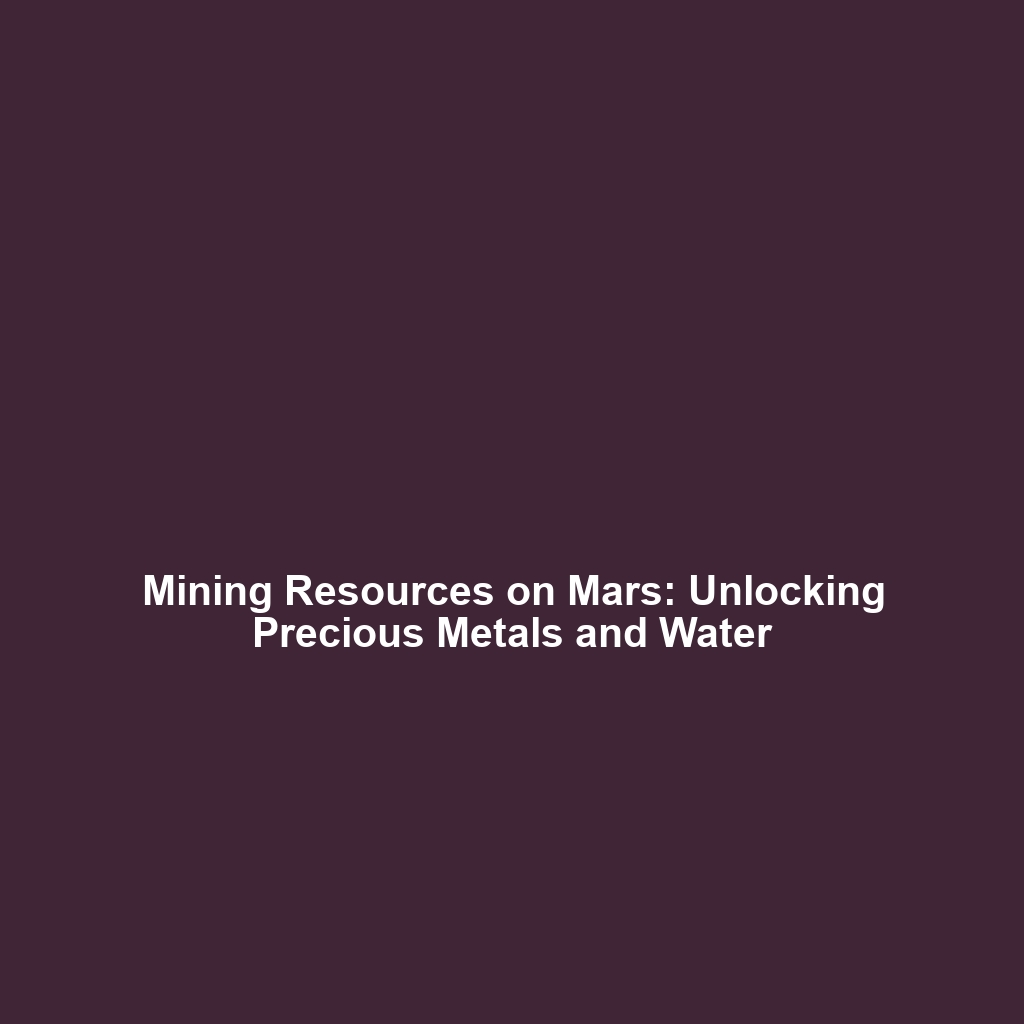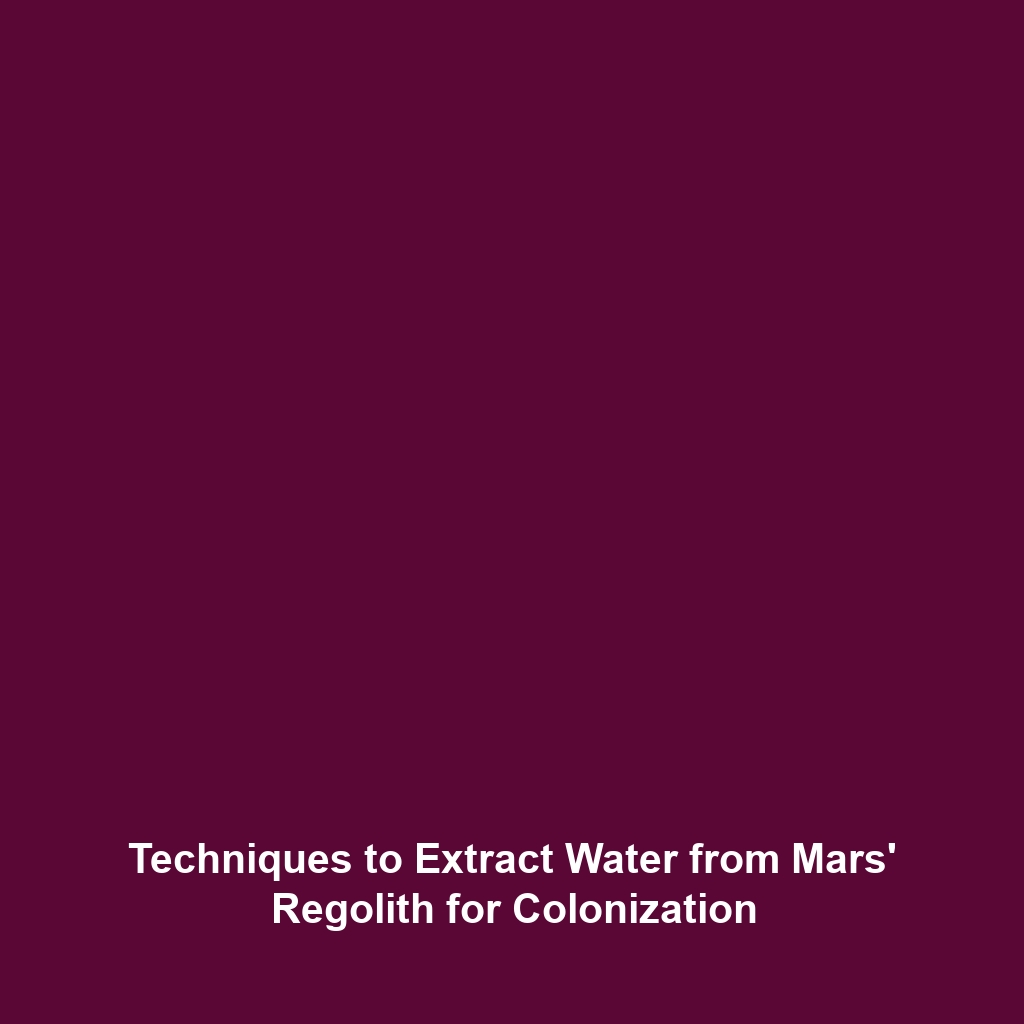Mining Resources on Mars: Potential for Mining Precious Metals, Water, and Other Resources
Introduction:
Mining resources on Mars stands as a significant frontier in the broader endeavor of colonizing the Red Planet. As we seek to create sustainable human habitats beyond Earth, understanding the potential for extracting valuable resources like precious metals and water on Mars is essential. This exploration can enable the establishment of a self-sustaining human presence on Mars, thereby transforming it into a viable option for future exploration and colonization. Unlocking Martian resources not only enhances our scientific knowledge but could also usher in a new era of technological advancements and economic opportunities on Earth and beyond.
Key Concepts
The exploration of mining resources on Mars encompasses several vital concepts that play a crucial role in the colonization efforts:
- Geological Diversity: Mars displays a range of geological features that may harbor precious metals like gold, platinum, and rare Earth elements.
- Water Resources: The presence of water ice in Martian polar regions is essential for sustaining future human missions.
- Sustainability: In-situ resource utilization (ISRU) methods, including the extraction of Martian resources, are vital for reducing dependence on supply missions from Earth.
Applications and Real-World Uses
Mining resources on Mars could revolutionize space exploration and contribute to colonization efforts in various ways:
- Extraction of Precious Metals: How mining resources on Mars can provide valuable commodities for use in spacecraft construction and technological applications.
- Water Recovery: Applications of mined water resources in life support systems, agriculture, and fuel production on Martian colonies.
- Manufacturing Materials: Utilizing Martian soil and minerals for building infrastructure necessary for long-term habitation.
Current Challenges
The study and application of mining resources on Mars face several challenges and limitations, which include:
- High cost of missions and technology development.
- Logistical challenges in transporting equipment and materials.
- Uncertain Martian geology affecting resource availability.
- Difficulties in developing sustainable extraction methods in harsh Martian conditions.
Future Research and Innovations
Upcoming innovations in the field of mining resources on Mars hold promise for overcoming existing challenges. Researchers are focusing on:
- Advanced Robotic Systems: Developing autonomous robots capable of functioning in extreme Martian environments to perform resource extraction.
- Sustainable ISRU Technologies: Innovations aimed at recycling materials and utilizing Martian resources to create a closed-loop system for life support.
- International Collaborations: Engaging in partnerships between governmental and private entities to enhance resource exploration and sharing of technologies.
Conclusion
Mining resources on Mars represents a pivotal component of our efforts to colonize the Red Planet. By unlocking the potential for extracting precious metals, water, and other resources, we can lay the groundwork for sustainable human settlements on Mars. As research and technology evolve, the pathway to a Martian society becomes increasingly feasible. To stay informed about advancements in this area, consider exploring related topics such as In-Situ Resource Utilization and Martian Geology.

